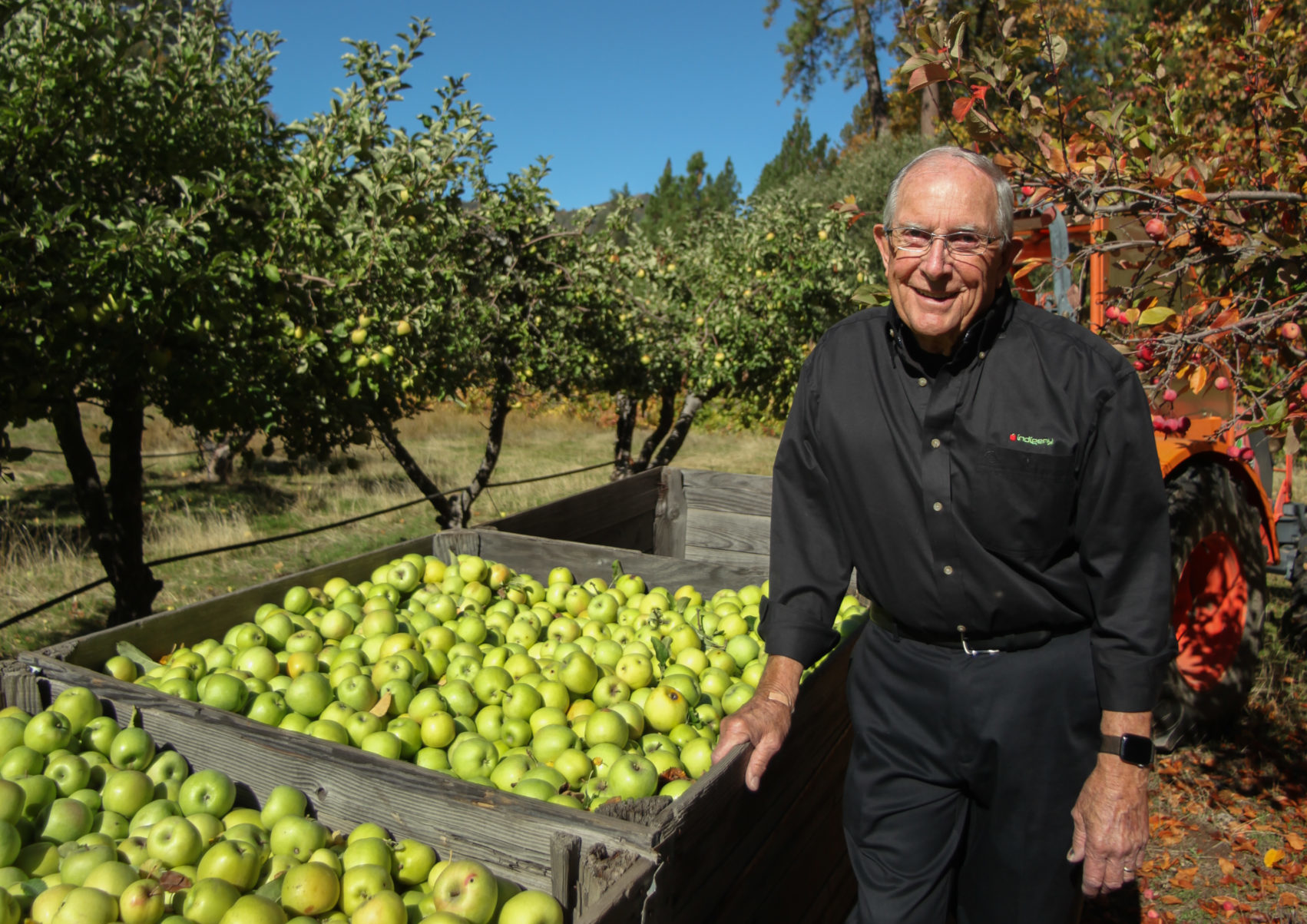
Dec 1, 2021
How a vertically integrated orchard and cider house became a regional centerpiece
Tucked in California’s gold country and about 1.5 hours outside of Yosemite is a 240-acre organic apple farm and cidery, featuring over 50 varieties of apples and split over two parcels – an upper and lower ranch – in the Sierra Nevada foothills.
Indigeny Reserve founders Jay and wife Judy Watson weren’t in the hard cider business when the idea hit to start their own operation. The pair searched for the ideal piece of land, and they toured up and down the West Coast – and some on the East Coast – visiting every operation they could.
“We tasted every cider from here to Canada,” said Jay Watson.
Settling on the Apple Valley Estates region of Sonora, California, in 2008, the couple got to work, taking courses, hiring the best in the cider-making business, and transforming the lower farm into a commercial operation with a small town feel and a welcoming destination for visitors.
Value of variety

The farm collectively has over 50 varieties of apples, with some trees dating back to the 1800s, and multiple varieties on a single tree. However, Honeycrisp and Granny Smith are the stars, even if they aren’t necessarily neighbors. The lower ranch had a fantastic Granny Smith yield this season, and the Honeycrisp variety fared much better at the upper ranch, which is 2,000 feet higher in elevation and, thus, had better chill hours. The varieties were chosen to bloom within sequence in April.
Indigeny does have its eyes on other varieties, however, since climate changes are affecting bloom. In an area that normally experiences winter frost, there has not been a winter frost at the farm for the last three years, said Watson, which affects budbreak.
“We don’t get the bloom at the same time; we’re not getting cross-pollination properly on the trees. One thing we’re trying to do is find another variety of apple that will bloom within the sequence,” he said.
Whichever variety the farm settles on, it could find its home in the blocks that were recently removed. Through an agreement with the local water authority and nearby residential Phoenix Lake, Watson will be using soil dredged from the lake to fill in areas of his orchards that were prone to flooding and will replant those acres.
The replanting process requires a five-year turnaround time. These blocks will be taken out of organic while they are filled with soil and nutrients for two years, at which point use of conventional products will stop, and the three-year window to organic certification starts. The field will be planted with M11 rootstock first, and then grafted.
“Taking it out of organic gives us that option to put a lot of nutrients in the ground and really give it that boost,” said Watson. “In two years, we can pump a lot of nutrients into it.”
In the field
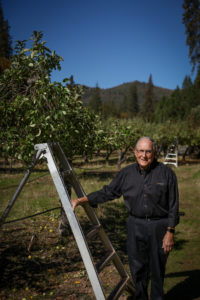
In drought-stricken California, Watson has the gift of water, flowing from Lyons Lake through flumes that were built after the gold rush miners made their marks in the region. Irrigated at 60 pounds of pressure, the trees started on drip, but have since been converted to rotating sprinklers. The trees are grown on mountain loam and clay soils, and the field uses soil moisture sensors to monitor at six and 12 inches. Indigeny also uses a clover cover and natural vegetation.
Mating disruption helps minimize insect pest populations, and the farm has to occasionally contend with bears, deer, foxes and coyotes. Indigeny’s biggest disease battle is fire blight, as there are limited control options for organic growers.
The whole operation is run by a full-time crew of four and with seasonal help. But within the regular cultural management practices is one that runs contrary to the norm in apple growing – there is no thinning done at Indigeny, and, therefore, the apples are small compared to those found on grocery store shelves.
“Smaller apples have better flavor,” said Watson.
Last year, the farm grew about half a million pounds of apples. This year produced closer to 750,000 pounds.
Into the bottle
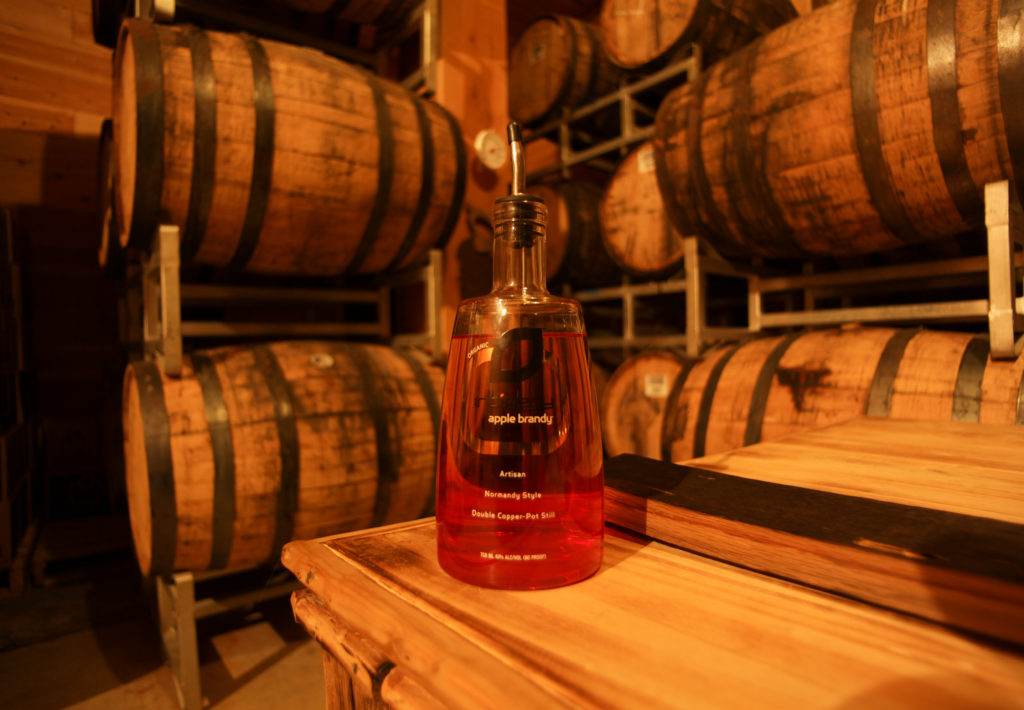
The apples from both ranches are combined, and about 3.5 tons of apples make their way up an elevator before they are cut into pulp and have the juice extracted by a bladder press, which presses out about 80-95% of the fruit’s juice in 2.5 hours. The juice is then placed in the 5,000-gallon fermentation tanks, and the one and a half bins of pulp either make their way back to the still or to local ranchers as livestock feed so that there’s zero apple waste.
There are four carbonation tanks, several fermentation tanks, as well as a German pot still, which is used to make brandy and vodka. The building has a 1,500 gallon-per-minute fire suppression system as a precaution.
“It’s a clean burn; there’s no flame,” said Watson.
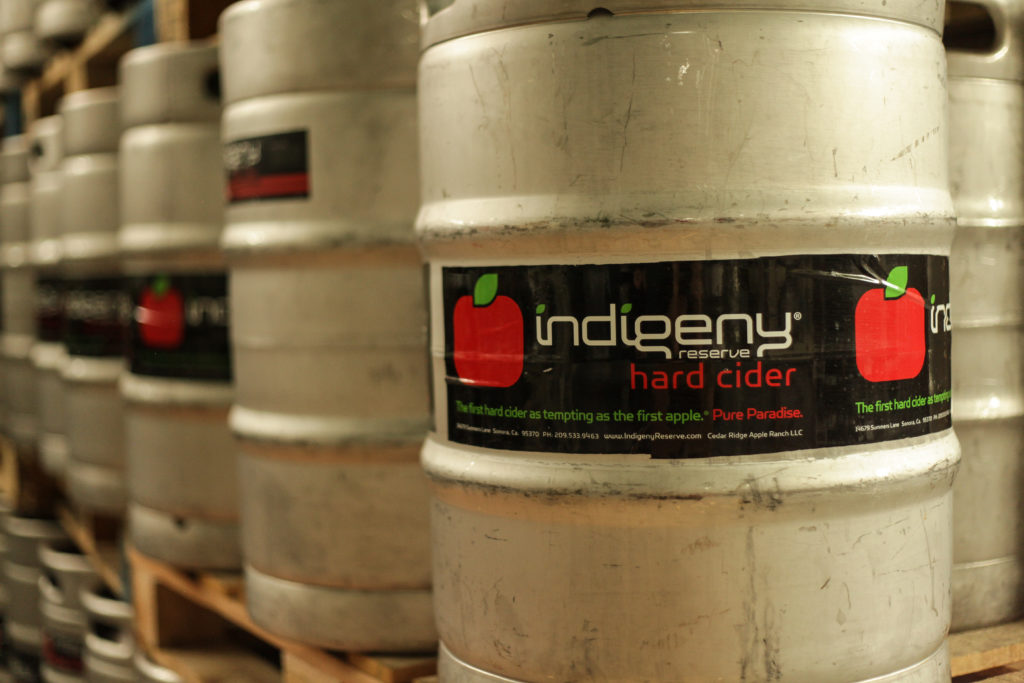
Everything is bottled in-house. Kegs move at 3-to-1 (one on tap, one in cooler, one coming back to be refilled), and the cider is packaged at 70 bottles per minute and overfilled to remove any oxygen before capping. The bottles are then washed, air-dried and electronically weighed.
Indigeny’s cider is available in notable, signature aluminum bottles, which took a year of testing to manufacture to preserve both the integrity of the flavor and of the bottle.
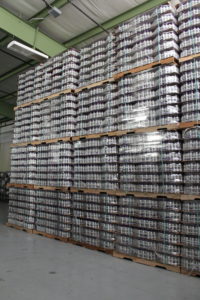
“Turns out, they’re really great for backpacking,” said Watson of the cider’s popularity among outdoor enthusiasts in the region. “The bottles store really well and can be crushed and recycled.”
Any bottles that don’t make the cut are verified by staff, and if still rejected they get sent straight to the still and used to make brandy or vodka. The brandy is aged in old Jack Daniel’s barrels, which have been scraped and reconditioned. Once tested for a couple weeks to be certain of no leaks, the barrels are placed in a cellar for at least five years.
“When we pull barrels, we pull 10 at a time,” said Watson. “Each barrel fractionally differs in age, so we’ll blend them together, do the filtration, and reduce the high alcohol level down.”
The temperatures in the cellar are conditioned with water that is circulated via pipes about 18 inches underground, using the earth’s temperatures to help regulate the room, which is helpful in a cellar that is centered among the tasting room, gift shop and fermentation room.
Capturing agritourism
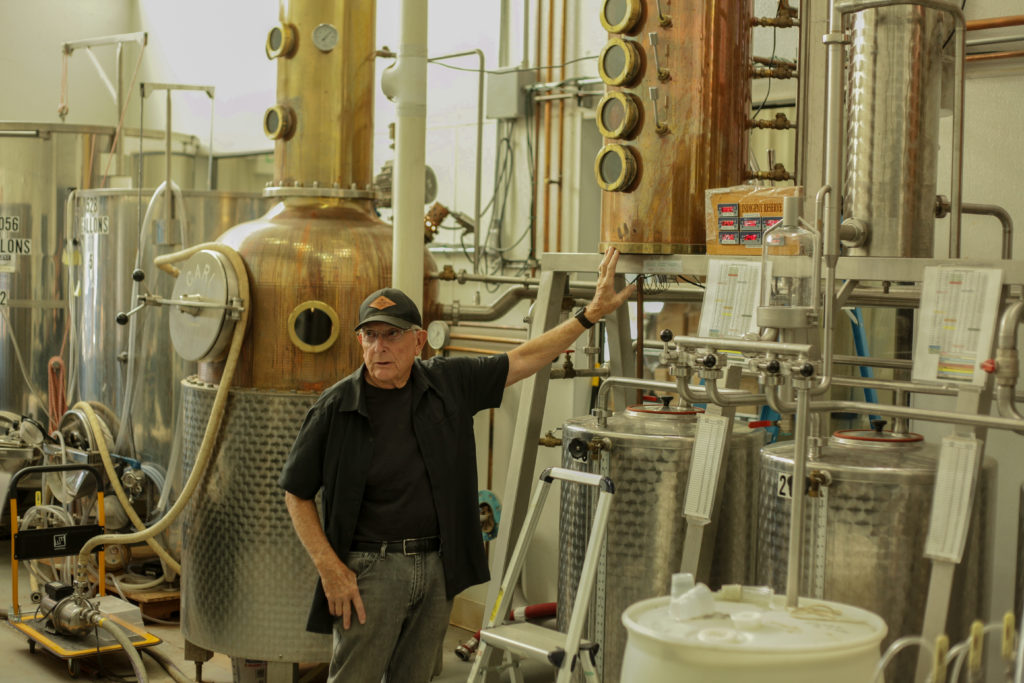
Indigeny Reserve is a vertically integrated operation, and aside from the demands of organic farm management, hard cider production and the wholesale and retail spaces, it’s a place that openly welcomes visitors who want a crisp glass and a stroll along the river or a picnic among the oaks.
The fenced picnic areas can seat up to 300 people and can be rented and reserved for events. The grounds also offer an open invite for RV enthusiasts and clubs, and other campers who dry camp or boondock.
The major highlight of the year is the October-long fall festival, which features seasonal cider flavors, a variety of local vendors, a pumpkin patch, hay rides and other activities every weekend during the month.
The farm is open seven days a week to the public for tastings, weddings, corporate and other events.









